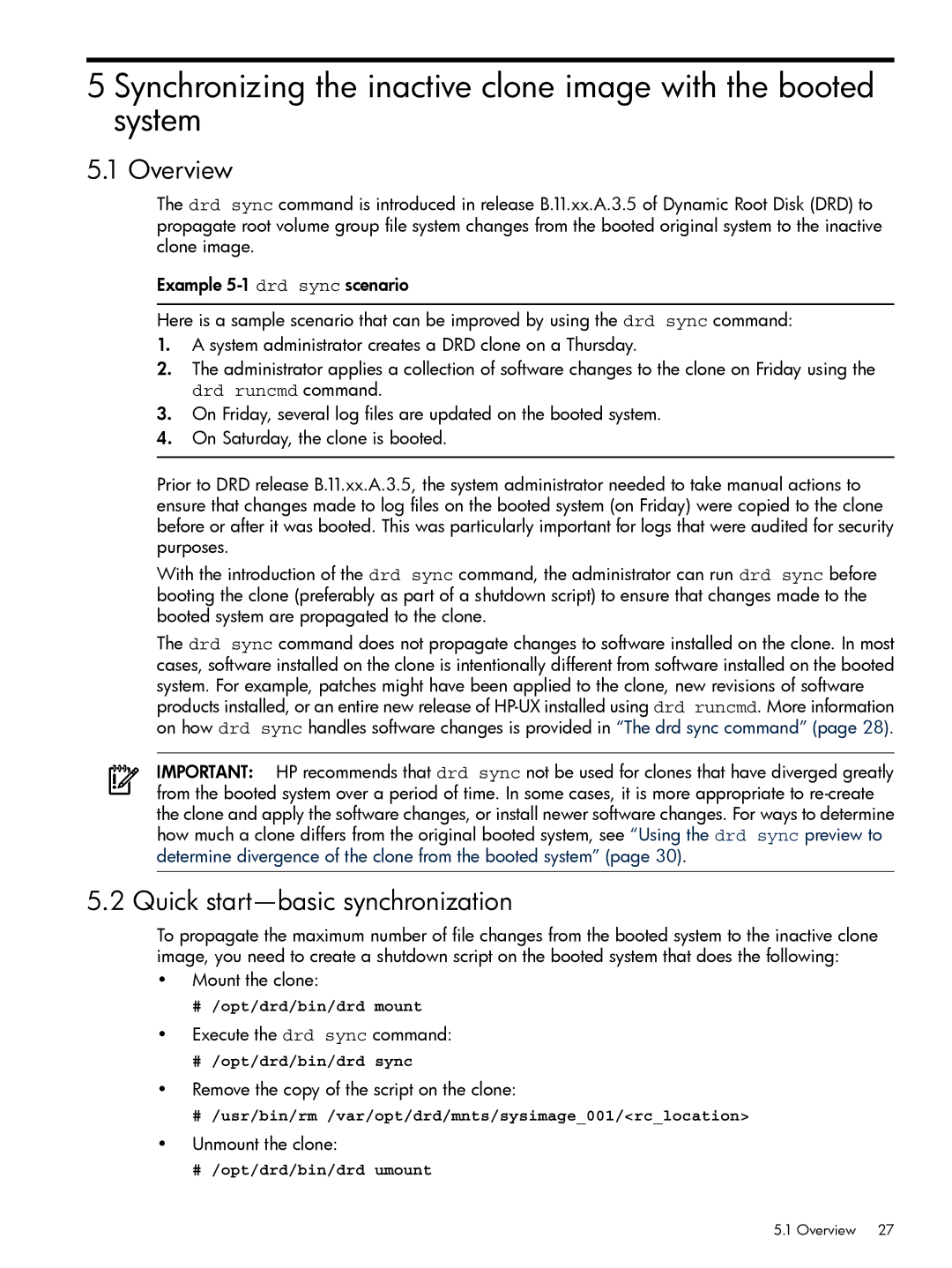
5 Synchronizing the inactive clone image with the booted system
5.1 Overview
The drd sync command is introduced in release B.11.xx.A.3.5 of Dynamic Root Disk (DRD) to propagate root volume group file system changes from the booted original system to the inactive clone image.
Example
Here is a sample scenario that can be improved by using the drd sync command:
1.A system administrator creates a DRD clone on a Thursday.
2.The administrator applies a collection of software changes to the clone on Friday using the drd runcmd command.
3.On Friday, several log files are updated on the booted system.
4.On Saturday, the clone is booted.
Prior to DRD release B.11.xx.A.3.5, the system administrator needed to take manual actions to ensure that changes made to log files on the booted system (on Friday) were copied to the clone before or after it was booted. This was particularly important for logs that were audited for security purposes.
With the introduction of the drd sync command, the administrator can run drd sync before booting the clone (preferably as part of a shutdown script) to ensure that changes made to the booted system are propagated to the clone.
The drd sync command does not propagate changes to software installed on the clone. In most cases, software installed on the clone is intentionally different from software installed on the booted system. For example, patches might have been applied to the clone, new revisions of software products installed, or an entire new release of
IMPORTANT: HP recommends that drd sync not be used for clones that have diverged greatly from the booted system over a period of time. In some cases, it is more appropriate to
5.2 Quick start—basic synchronization
To propagate the maximum number of file changes from the booted system to the inactive clone image, you need to create a shutdown script on the booted system that does the following:
•Mount the clone:
#/opt/drd/bin/drd mount
•Execute the drd sync command:
#/opt/drd/bin/drd sync
•Remove the copy of the script on the clone:
#/usr/bin/rm /var/opt/drd/mnts/sysimage_001/<rc_location>
•Unmount the clone:
#/opt/drd/bin/drd umount
5.1 Overview 27
